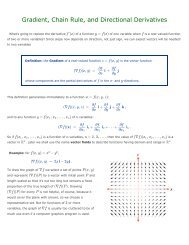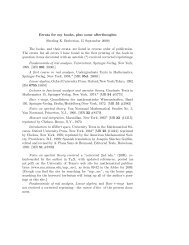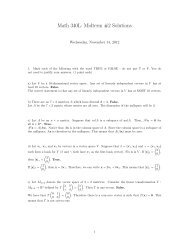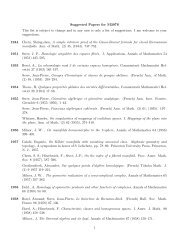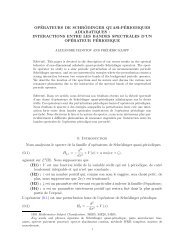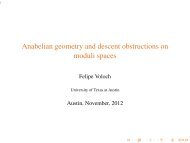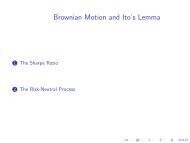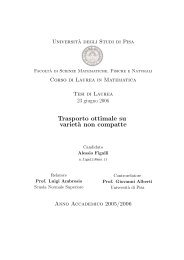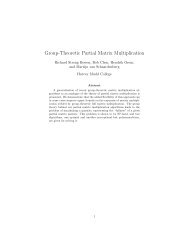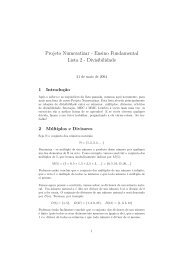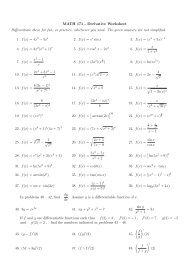Optimal transport, Euler equations, Mather and DiPerna-Lions theories
Optimal transport, Euler equations, Mather and DiPerna-Lions theories
Optimal transport, Euler equations, Mather and DiPerna-Lions theories
You also want an ePaper? Increase the reach of your titles
YUMPU automatically turns print PDFs into web optimized ePapers that Google loves.
1.3. SUB-RIEMANNIAN MANIFOLDS 15<br />
Theorem 1.3.1 Let µ <strong>and</strong> ν be (compactly supported) probability measures, with µ absolutely<br />
continuous with respect to vol. Assume that there exists an open set Ω ⊂ M × M such that<br />
supp(µ × ν) ⊂ Ω, <strong>and</strong> d2 SR is locally semiconcave (resp. locally Lipschitz) on Ω \ D. Then there<br />
exists a function φ : M → R, <strong>and</strong> an open set A ⊂ M, such that φ is locally semiconcave inside<br />
A, <strong>and</strong> the unique optimal <strong>transport</strong> map is given by<br />
T (x) :=<br />
expx(− dφ(x)) if x ∈ A,<br />
x if x ∈ M \ A.<br />
We see that we can recover more or less the st<strong>and</strong>ard Riemannian result, simply splitting<br />
the <strong>transport</strong> map in two sets suitably chosen. The key points with respect to previous results<br />
in the sub-Riemannian setting are:<br />
1) We do not make any assumption of regularity on the sub-Riemannian distance on the<br />
diagonal (all previous results assumed at least the function d2 SR to be Lipschitz on the<br />
diagonal, like in the Heisenberg group).<br />
2) We can prove a “second order regularity” of the function φ appearing in the formula for<br />
the <strong>transport</strong> map (recall indeed that semiconcave function are twice differentiable a.e.)<br />
In particular, thanks to 2), we can prove a weak regularity property of the optimal <strong>transport</strong><br />
map, as in the Riemannian case. This allows for instance to write (for the first time, to our<br />
knowledge) a weak formulation of Monge-Ampère equation in a sub-Riemannian setting:<br />
Theorem 1.3.2 With the same assumption of Theorem 1.3.1, the optimal <strong>transport</strong> map is<br />
differentiable µ-a.e. inside A, it is approximately differentiable at µ-a.e. x. Moreover<br />
Y (x) := d(exp x) −dφ(x) <strong>and</strong> H(x) := 1<br />
2 Hess dSR(·, T (x)) 2 |z=x<br />
exists for µ-a.e. x ∈ A, <strong>and</strong> the approximate differential of T is given by the formula<br />
<br />
˜dxT<br />
Y (x) H(x) − Hess φ(x) if x ∈ A,<br />
=<br />
Id if x ∈ M \ A,<br />
where Id : TxM → TxM denotes the identity map.<br />
Finally, assuming both µ <strong>and</strong> ν absolutely continuous with respect to the volume measure,<br />
<strong>and</strong> denoting by f <strong>and</strong> g their respective density, the following Jacobian identity holds:<br />
<br />
det ˜dxT <br />
f(x)<br />
= = 0 µ-a.e. (1.3.3)<br />
g(T (x))<br />
In particular φ satisfies in a weak sense the Monge-Ampère type equation<br />
det H(x) − Hess φ(x) =<br />
f(x)<br />
| det(Y (x))|g(T (x))<br />
for µ-a.e. x ∈ A.



